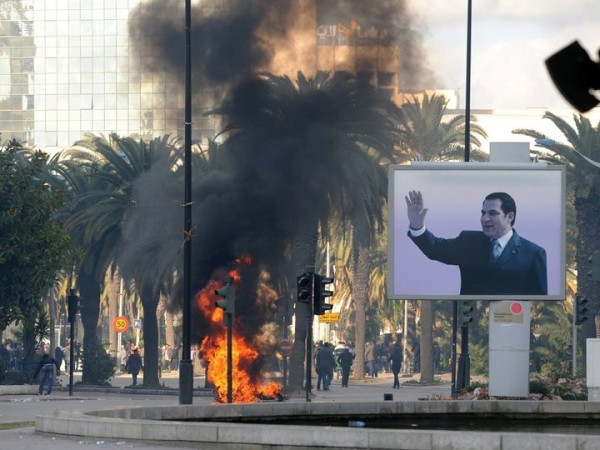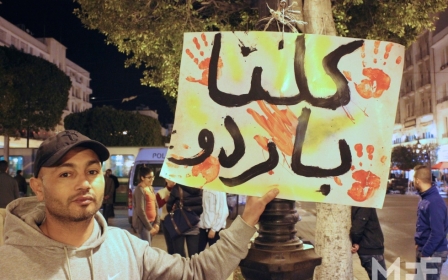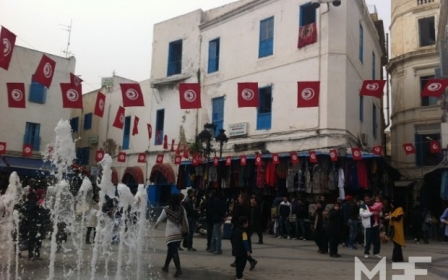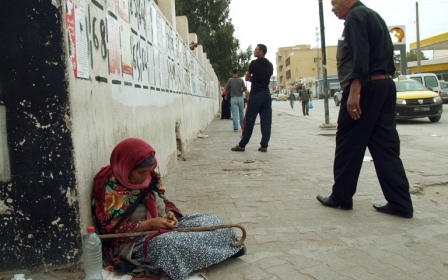Timeline of Tunisia violence: 2010-2015

Tunisia on Wednesday saw its first deadly attack on foreigners since the 2010-2011 uprising that toppled president Zine El Abidine Ben Ali after 23 years in power.
But the country that gave birth to the Arab Spring has seen a sharp rise in Islamist militancy, which has killed about 60 police and military personnel since 2010.
A timeline of unrest:
2010
17 December: A young university graduate who has only been able to find work as a fruit seller burns himself to death to protest police harassment and unemployment in the central town of Sidi Bouzid, unleashing rioting which spreads across the country. Some 338 are killed.
2011
14 January: Under massive popular pressure Ben Ali flees to Saudi Arabia.
25 February: Police stations are attacked as anti-government demonstrations force Ben Ali's last Prime Minister, Mohamed Ghannouchi, to resign. He is replaced by veteran politician Beji Caid Essebsi.
27-28 October: Violence erupts in Sidi Bouzid after results of Tunisia's first free election are announced, in which the Muslim Brotherhood-linked Ennahda party wins most seats in a constituent assembly.
2012
11-12 June: Unrest triggered by an art exhibition of work deemed offensive to Islam. The government blames hardline Salafists and old regime loyalists.
14 September: Four attackers killed in clashes at the US embassy amid protests over an anti-Islam film.
27 November – 1 December: 300 hurt in clashes between police and protesters in Siliana, southwest of Tunis.
2013
6 February: Prominent opposition leader Chokri Belaid assasinated, triggering deadly protests and a political crisis that brings down the Prime Minister Hamadi Jebali. On 25 July, opposition leader Mohamed Brahmi is shot dead. In December 2014 claim both killings.
29 July: Eight soldiers are killed in the Mount Chaambi area near Algeria where Tunisian forces have been hunting an al-Qaeda-linked group since December. On 2 August, the army announces a major operation against what it dubs Islamist militants in the area.
30 October: A suicide bomber blows himself up on a beach in the resort town of Sousse, leaving no victims, while security forces foil another planned attack nearby.
2014
4 February: The suspected Islamist assassin of Belaid is killed in a police raid, one of seven heavily armed terrorists slain in an operation launched at a house in a Tunis suburb.
13 June: Al-Qaeda in the Islamic Maghreb says it was responsible for an attack on the interior minister's home that killed four policemen, the first such claim in the country.
16 July: Suspected jihadists kill 15 soldiers in the Mount Chaambi region, in the deadliest such attack in the army's history.
24 October: Police kill six suspected militants, five of them women, in a raid on a suburban house after a 28-hour standoff, fanning tensions ahead of parliamentary polls.
21 December: Essebsi wins Tunisia's first free presidential election.
2015
18 March: Seventeen tourists from Poland, Italy, Germany and Spain are among 21 people killed as gunmen attack a Tunis museum, according to the country's prime minister.
Middle East Eye propose une couverture et une analyse indépendantes et incomparables du Moyen-Orient, de l’Afrique du Nord et d’autres régions du monde. Pour en savoir plus sur la reprise de ce contenu et les frais qui s’appliquent, veuillez remplir ce formulaire [en anglais]. Pour en savoir plus sur MEE, cliquez ici [en anglais].




